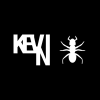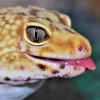- Formiculture.com
- Forums
- Gallery
- Members
- Member Map
- Chat

Help finding Crematogaster/Pheidole
Started By
MC Wren
, Jun 13 2017 2:08 PM
10 replies to this topic
#1
 Offline
-
Posted June 13 2017 - 2:08 PM
Offline
-
Posted June 13 2017 - 2:08 PM
I recently bought a Tar Heel Ants Traditions formicarium for my Crematogaster cerasi colony. However, before the formicarium arrived (which it still hasn't over a month after I bought it!), my Crematogaster queen died. Now the only ants I have to put in the formicarium are a Lasius neoniger colony. However, I'd much rather have a Crematogaster colony or my dream genus (in my area at least) Pheidole. The problem with that is I've barely ever seen these in the wild! I've seen only a couple of Crematogaster workers ever, and I have some TINY Pheidole ants on my front lawn that I haven't seen in months, and I'd rather have a bigger species than that. So here's my question: what kind of habitat can I find Crematogaster colonies in on Long Island, New York? And what kind of habitat can I find Pheidole colonies in?
#2
 Offline
-
Posted June 13 2017 - 4:38 PM
Offline
-
Posted June 13 2017 - 4:38 PM
If you've seen Pheidole workers near you, I'd recommend setting up some baits and distributing them outside to see if the colony still there. As for the Crematogaster, I would set up baits in particularly wooded areas. I'm assuming you're not in New York City, which would cause problems for obvious reasons. I live in a Suburb of Philly, which is in a relatively similar habitat as the suburbs of NY, and I don't think it should be too difficult to locate a nearby forest or meadow. If you have Crematogaster near you, you'll know; they make long foraging trails and have that distinct, heart-shaped gaster I'm sure you're familiar with.
Crematogaster tend to fly later in the year; caught all of mine in September. I've also never seen a winged female. This is presumably due to this species' tendency to mate inside the nest and send out fertilized queens who've already shed their wings, unlike other species who fly outside of the nest and exhibit nuptial flights.
I know that Pheidole are attracted to black lights like magnets. I would recommend purchasing a powerful black light, and setting up a reliable construction to illuminate as much area with as much intensity as you possibly can. You can read more about blacklight setups here.
Good luck hunting!
#3
 Offline
-
Posted June 15 2017 - 11:42 AM
Offline
-
Posted June 15 2017 - 11:42 AM
I want an established colony, I don't want to wait until next year to have workers. Also, Long Island is extremely different from the suburbs of Philly. Long Island is one of the most densely populated areas in the country and the only way to leave it is to drive through New York City for like an hour.
The point of my question is that I want to know where to find these ants in a more specific location than the obvious "in a forest or meadow."
The point of my question is that I want to know where to find these ants in a more specific location than the obvious "in a forest or meadow."
#4
 Offline
-
Posted June 15 2017 - 12:22 PM
Offline
-
Posted June 15 2017 - 12:22 PM
Here's an image of a habitat where I have seen a Crematogaster sp. colony in:

I find them a lot in dense forest, but I also find that they love foraging on short, jagged stone walls on field edges. They have a fairly wide range of habitats in my experience.
Edited by Nathant2131, June 15 2017 - 12:23 PM.
#5
 Offline
-
Posted June 15 2017 - 12:39 PM
Offline
-
Posted June 15 2017 - 12:39 PM
I don't recommend collecting colonies, especially dirt nesting species, because this can cause colony death, stress, and/or other issues you don't want to deal with, nor does the colony. Collect founding queens and start a colony. It's also more fun to watch the whole process.
Edited by Kevin, June 15 2017 - 12:39 PM.
Hit "Like This" if it helped.
#6
 Offline
-
Posted June 15 2017 - 12:45 PM
Offline
-
Posted June 15 2017 - 12:45 PM
If you're smack dab in the middle of a busy city, your best bet is probably GAN/buying a colony.
Where did you originally get the 1st crematogaster colony?
#7
 Offline
-
Posted June 15 2017 - 12:49 PM
Offline
-
Posted June 15 2017 - 12:49 PM
Oh, that colony with the picture was in Freedom, New Hampshire (Northern New Hapmshire) forgot to add that.
#8
 Offline
-
Posted June 15 2017 - 1:27 PM
Offline
-
Posted June 15 2017 - 1:27 PM
I found the queen by a sidewalk a couple of blocks from my house. I have absolutely no idea where she came from, because I've never even seen a single Crematogaster worker in my neighborhood. She probably came from a colony in someone's backyard or something, or maybe hitched a ride on a car.If you're smack dab in the middle of a busy city, your best bet is probably GAN/buying a colony.
Where did you originally get the 1st crematogaster colony?
Ahhhhh, that's exactly the kind of answer I was looking for. So how about Pheidole?Here's an image of a habitat where I have seen a Crematogaster sp. colony in:
I find them a lot in dense forest, but I also find that they love foraging on short, jagged stone walls on field edges. They have a fairly wide range of habitats in my experience.
#9
 Offline
-
Posted June 15 2017 - 2:43 PM
Offline
-
Posted June 15 2017 - 2:43 PM
I've never personally seen Pheidole.
#10
 Offline
-
Posted June 19 2017 - 5:15 AM
Offline
-
Posted June 19 2017 - 5:15 AM
I, too, am looking for crematogaster. I have found a larger established colony at a friends house. Can queens be trapped? I was going to try setting up a water trap with a timed blacklight since I cannot be there watching every day. Conning my buddy to look in a tub of water might be easier. If the queens are wingless, though, would this be effective at all? should I just set up a woodpile and hope for the best?
#11
 Offline
-
Posted June 20 2017 - 5:13 PM
Offline
-
Posted June 20 2017 - 5:13 PM
I've already found two crematogaster queens in the past couple of days. I live in tennessee so it is rather strange that they would be flying this early. I found them both in our pool so if you have one then that is the best place to look for them.
I accidentally froze all my ants
1 user(s) are reading this topic
0 members, 1 guests, 0 anonymous users



















